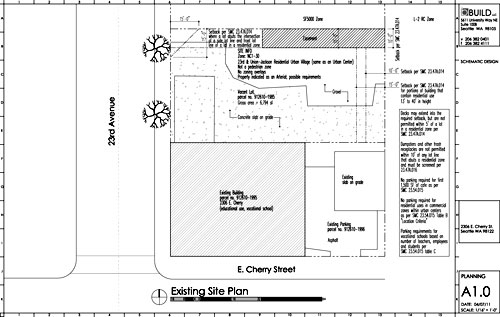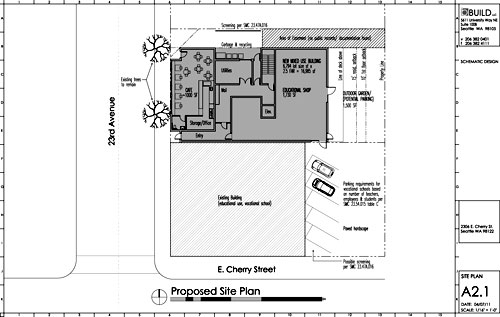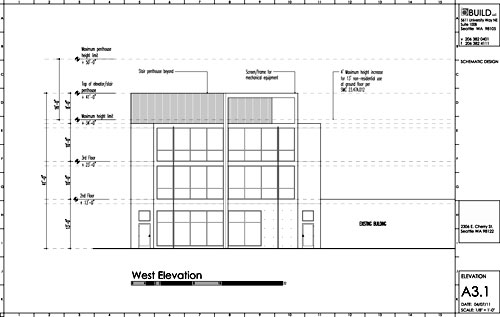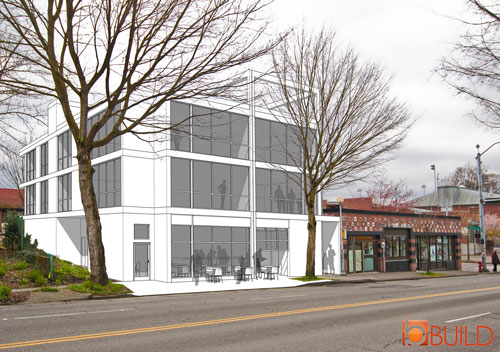
We just wrapped up a pro-bono schematic design/ feasibility package for a favorite social (non-)profit organization in town and it’s a good time to share our process. We’ve used this system of research and design a couple of times now. As a Case Study, it’s an effective method to evaluate the viability of a project and provide solid information for these admirable organizations, and of course, it’s always satisfying to put our skills to use for a good cause. So here goes:
Initial Contact
We’re usually approached for pro-bono work for a number of reasons; sometimes because of the previous posts on the BUILD blog or past projects that are similar in nature. Occasionally, we’re introduced to individuals in need because we can effectively be of assistance with their situation. Today’s post is a more common example, where someone in our tribe connects us with a social profit that they think will be a good match.
Client interview
Upon meeting with an organization, we gain a better understanding of what they do and how they do it. Often times, we have a basic understanding of their mission and have an initial idea of how we can be of use to furthering that mission, and our meeting helps to sharpen and expand that understanding.
Consideration
We discuss the organization and the work. We verify that it’s a worthy cause and make sure that we share common goals. It’s usually pretty dang clear whether we’re a good fit for the work.
Information Gathering
We visit the site and take lots of photos. Simple sketches allow us to document our initial thoughts and note critical information about our observations on site. Initial reviews of the Municipal Code and the International Building Code are conducted and we compile a summary of our findings. We check the city records and see what’s on file for past permits, property liens, drawings and whatever else is on file. When possible, we talk to a planning official at the city to clarify or confirm our findings*. Although our summary typically captures the key information, we always advise that a more detailed review and meeting with city officials occur if and when the work moves forward.


*Since the last round of lay-offs at the City of Seattle’s Department of Planning and Development there are no longer planning officials available for consultation. The only option to get your questions answered is by setting up an appointment with a planning consultant at $250 per hour (even for non-profit work). Two Hundred and Fifty Dolllars, per hour. Trust me, we are very aware that tough times are upon us all, but c’mon City of Seattle!
Schematic Design
We sketch our ideas up, create diagrams of how the program should function and draw up schematic plans and elevations. The plans are basic and illustrate conformance to the codes, site parameters, and functional relationships. The elevations create a framework for how the project could look. The drawings communicate the requirements and are departure points for the eventual aesthetics of the project.



Modeling
We typically work up a simple three-dimensional model of the project to communicate the volume and envelope. Snapshots of the model placed within the site provide a basic idea, a departure point really, of what the overall project could be.

Target Budget
Given everything we know about the project so far, we generate high and low budgets for the project. We calculate potential income, construction costs and other anticipated soft costs for the project. This is usually in the form of a concise one page spreadsheet and (depending on the project) can take on the function of a pro-forma. In general, we are big fans of summarizing complex batches of information on one page (be it budgets, design diagrams….).
Presentation
The diagrams, drawings, images and budget are combined into a neat and tidy package. This allows the organization to digest the information. The components of the package can also serve as, or supplement, the organization’s marketing and promotional material –this often helps with fundraising or generating additional interest in the organization.
Client Meeting
We present our findings and design summary to the organization and (if applicable) we discuss additional possibilities that have been uncovered in the process. Although we work to professionally capture an accurate design and feasibility for the project, we typically outline the limitations of a limited scope preliminary package; the process is not a complete design package and additional phases will be required; these include Design Development, Permit Documents, Construction Documents, specifications, additional pricing exercises, etc. Our primary motivation is to capture a preliminary envelope design and reasonable expectations for the costs to complete the project.
Moving Forward
The organization now has enough information to define their fundraising efforts and/or begin speaking with development partners and financing options about construction lending.
You know, we recently posted about the painful pitfalls of architects working for free, and our goal here is to share this recent experience as a worthy pro-bono counterpoint. We see providing these focused/ concise services to an organization that is performing the true civil society heavy-lifting for all of us as really the least we can do. We know that our community and our readers all do what we can to contribute to the greater good, and in our small way, that is just an example of giving something back. We’re sharing our process with the modest hope that it will provide some further inspiration, motivation or other unforeseen lifts to your own contributions.
Cheers from team BUILD.





